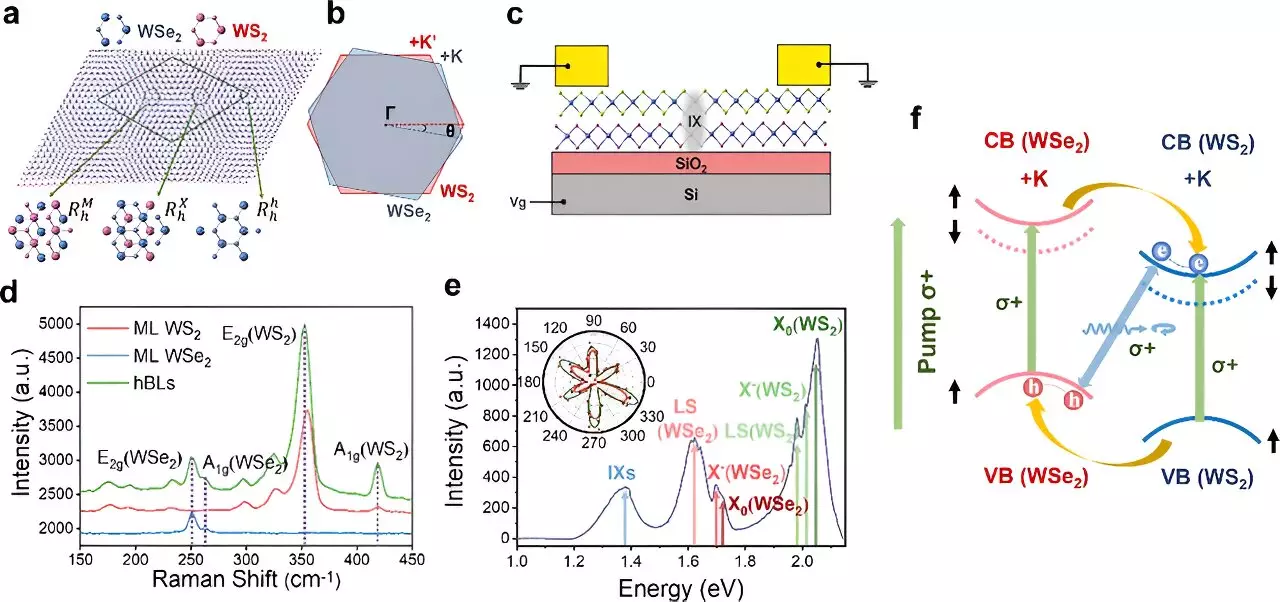Valley polarization switching and polarization degree in transition metal dichalcogenide heterobilayers (hBLs) have been a subject of recent research. Twist engineering has been identified as a crucial tool in manipulating the valley degrees of freedom of interlayer excitons (IXs). The moiré pattern between different monolayers in van der Waals (vdW) heterostructures plays a significant role in shaping the nanoscale periodic potential, providing a unique opportunity for the development of valleytronic devices.
Valley Polarization Control
The study conducted by Prof. Wang Can and Prof. Xu Xiulai delves into the impact of twist angle on controlling the valley polarization of IXs in electrically controlled heterostructures. By adjusting the twist angle, researchers were able to demonstrate effective control over the degree of circular polarization (DCP) and polarization switching in WSe2/WS2 heterostructure devices with varying moiré periods.
The researchers found that a larger moiré period resulting from a lower interlayer excitonic potential leads to enhanced DCP due to the confinement of more excitons. Additionally, increased intralayer electron-hole exchange interactions at larger twist angles contribute to a decrease in intralayer valley lifetime, ultimately reducing interlayer valley polarization. The theoretical calculations based on first-principle theory support these findings, showing an increase in the difference of excitonic potential between two minima with the twist angle.
Based on the observed polarization switching, the researchers have successfully demonstrated a valley-addressable encoding device that could pave the way for the development of future non-volatile memories. The ability to manipulate valley properties through twist engineering opens up possibilities for advanced optoelectronic applications relying on valley physics.
The study highlights the significant influence of twist engineering on valley polarization switching and degree in transition metal dichalcogenide heterobilayers. By investigating the dependence of excitonic potential on twist angle, the researchers have provided valuable insights into the controllability of valley properties in electrically controlled heterostructures. This research sets the stage for the development of innovative valleytronic devices with enhanced functionalities.


Leave a Reply